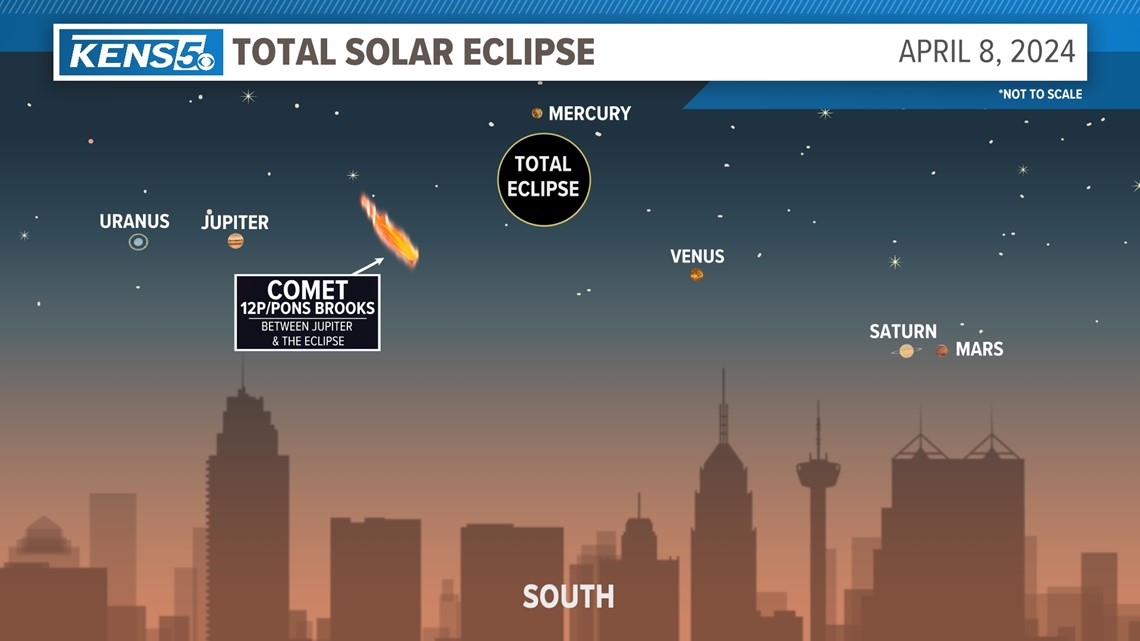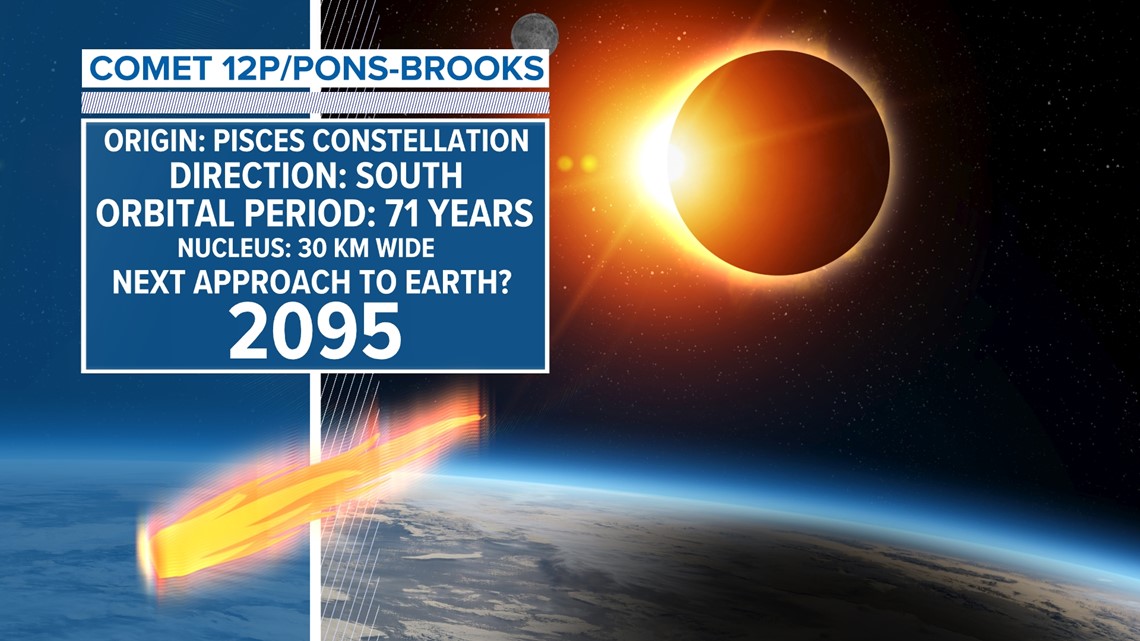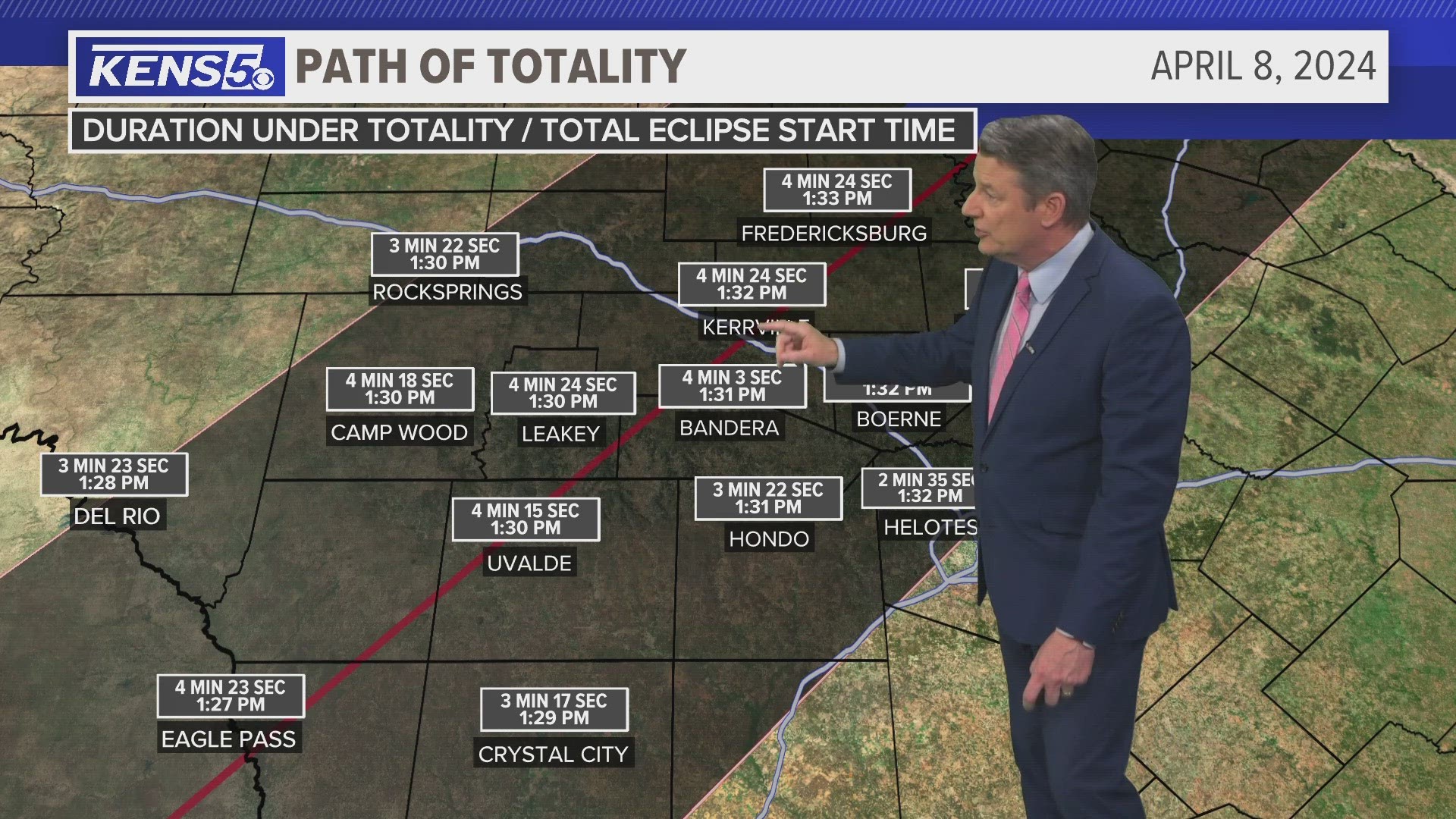SAN ANTONIO — During the solar eclipse on April 8, many San Antonians will experience darkness fall across the sky during totality around 1:30 p.m. This event will leave more than just outer surface of the sun visible to the naked eye.
As the moon completely blocks out 100% of the sun's light other celestial objects will also be present. Stars, planets and possibility of a comet will grace the San Antonio sky for a couple of minutes. This amazing sight will only be possible if you're in the path of totality.
Even at 99.9% coverage of the sun will not provide the full effect, it will not get dark, you will not see planets or the sun's corona, the outermost part of the sun's atmosphere. In addition, you will not be able to remove your solar glasses.
Where and when will planets be visible:
During totality, the sun will be very high up in the sky and many people won't even notice any light changes for the first hour before the eclipse, according to Angela Speck Ph.D., UTSA Professor and Department Chair, Physics and Astronomy. This is because your eyes will begin to dilate and adjust as if you're walking into a dark room.
According to Dr. Speck, the 15-20 minutes before totality the sky could seem like it's out of the ordinary but during the last minute is when all the fun takes place.
"The last minute before totality is when everything changes. It goes from basically as dark as an overcast day...and it plunges to at least late twilight in about a minute. So it gets dark very, very fast, said Dr. Angela Speck, Department Chair at UTSA.
The darkness could vary from late twilight to a full moon dark, according to Dr. Speck. How dark it gets in parts of San Antonio depends on weather.
Good news is even if the sky appears more twilight San Antonians could still see planets.


In order to see planets San Antonians will want to look south toward the sun as the sun will sit in between Jupiter and Venus. These are the first and second brightest planets in our solar system and are usually spotted at nighttime as well.
As the sky gets very dark around the sun San Antonians can also draw their eyes down near the horizon where a full 360 degrees of sunset colors will be present, depending on weather.
We could also see other cosmic surprises.
The stars we would see six months from now at night are behind the sun and we wouldn't normally see during the day could make an appearance during the eclipse, but only the brightest stars, according to Dr. Speck.
The planets Mercury, Saturn and Mars could also be seen if dark enough. But a really cool thing for San Antonians to be on the hunt for is a comet.
What to know about the comet:
A comet known as the 'devil's comet' will be flying past earth during the eclipse but knowing whether it will be visible to the naked eye is something we'll have to wait and see.
The reason this comet should be kept on radar is because it would normally be present during daylight when the sun would block out the view. But now, the comet could be visible since sunlight will be blocked by the moon during totality.
The other interesting thing about the comet is it won't come back around the sun for another 71 years, according to Space.com. In order for the comet to be seen with a naked eye it must be measured at a certain magnitude. The website says "eclipse comets" are very rare but possible.
If the comet does make an appearance it will lie between Jupiter and the sun.


The comet received it's sinister name as astronomers noticed it erupt fairly frequently and it was during these eruptions caused the comet to have an irregular shape resembling horns, according to Space.com.

